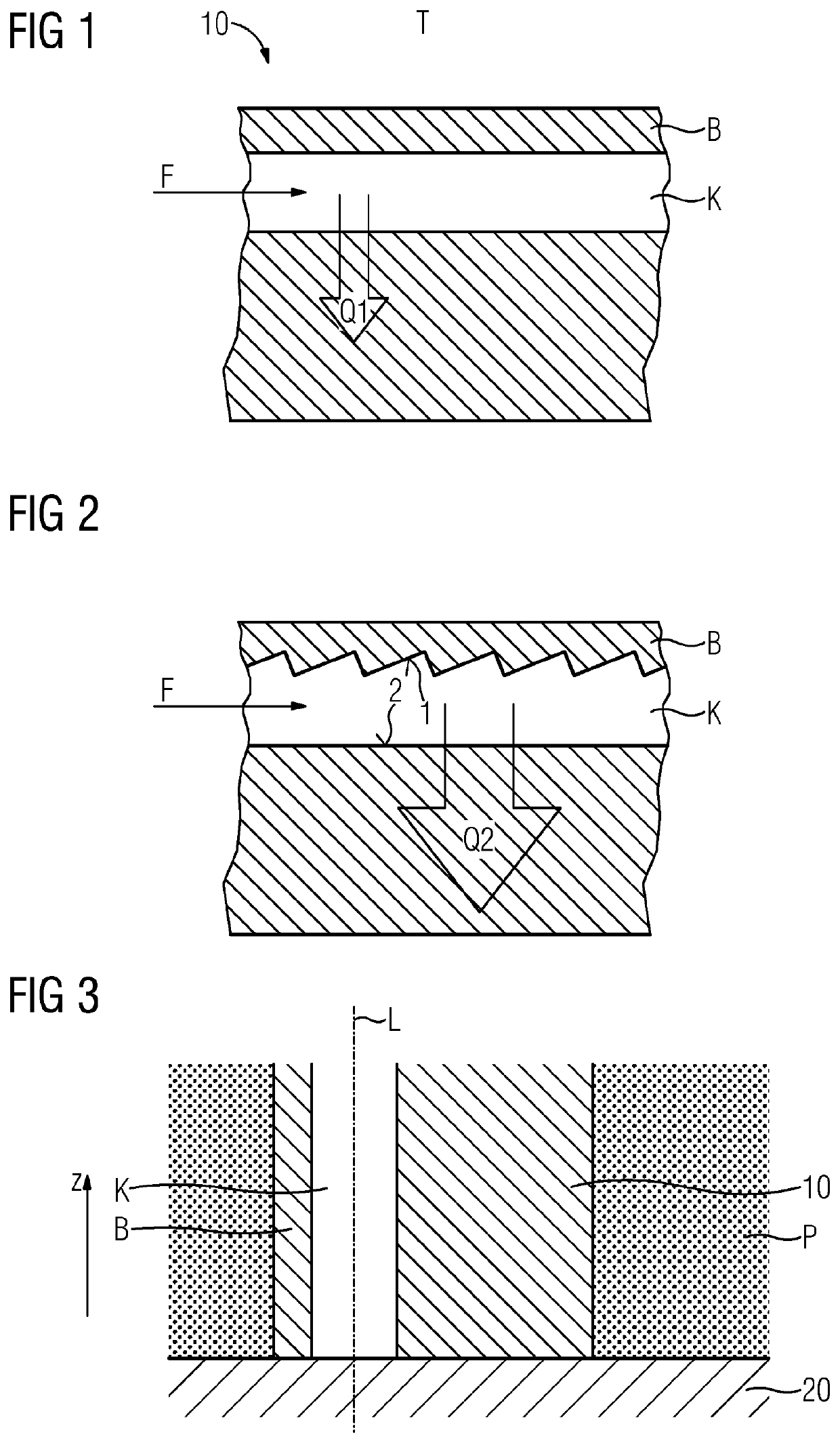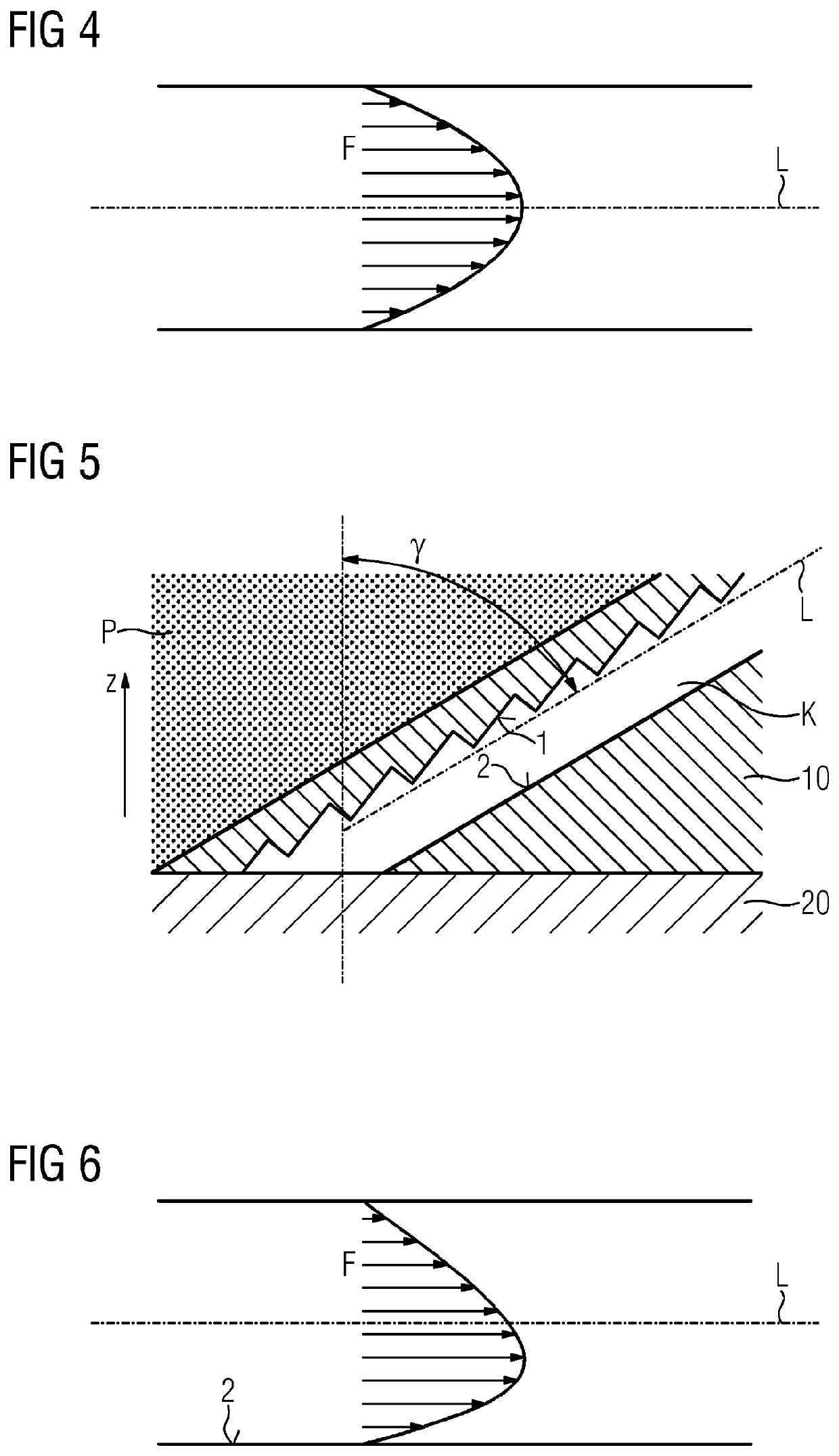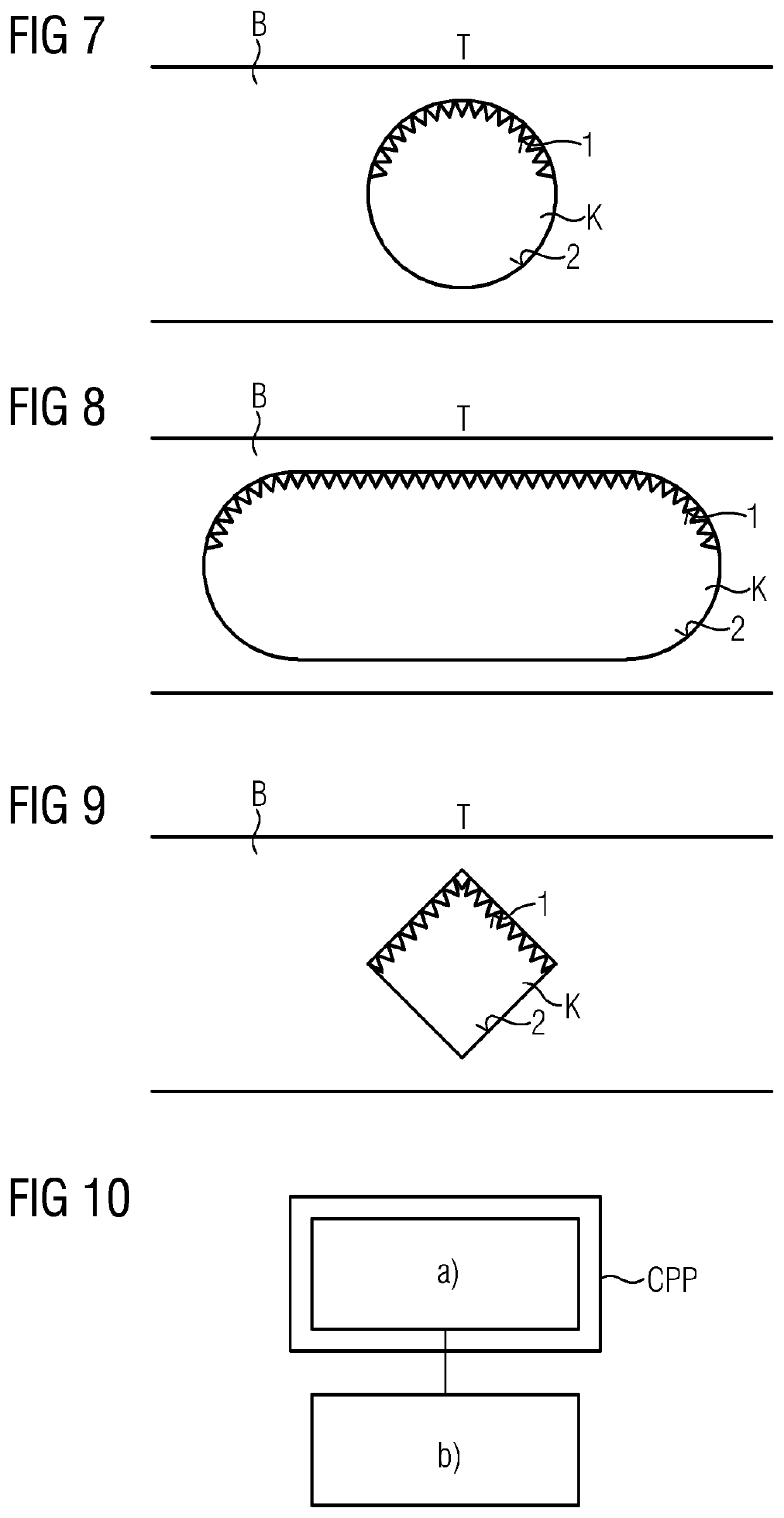Component with a region to be cooled and means for the additive manufacture of same
a technology of components and regions, applied in the field of components, can solve the problems of large variation in surface quality, lack of reproducibility, and ever higher temperatures in the ho
- Summary
- Abstract
- Description
- Claims
- Application Information
AI Technical Summary
Benefits of technology
Problems solved by technology
Method used
Image
Examples
Embodiment Construction
[0056]In the exemplary embodiments and figures, elements that are the same or act in the same way may be provided in each case with the same designations. The depicted elements and their sizes in relation to one another are in principle not to be regarded as true to scale; rather, individual elements may be illustrated with exaggerated thickness or size dimensions for improved clarity and / or for improved understanding.
[0057]FIG. 1 shows at least part of a component 10 in a longitudinal section. The component 10 is advantageously a component of a high-temperature-resistant material of a complicated shape to be additively manufactured from the powder bed.
[0058]The component 10 has a region B to be cooled during the operation of the same. The region B advantageously defines during the operation of the component a surrounding area by which the component is subjected to high thermal loads, such as for example a hot gas path of a gas turbine. The region B may accordingly be a wall region ...
PUM
| Property | Measurement | Unit |
|---|---|---|
| angle | aaaaa | aaaaa |
| angle | aaaaa | aaaaa |
| angle | aaaaa | aaaaa |
Abstract
Description
Claims
Application Information
 Login to view more
Login to view more - R&D Engineer
- R&D Manager
- IP Professional
- Industry Leading Data Capabilities
- Powerful AI technology
- Patent DNA Extraction
Browse by: Latest US Patents, China's latest patents, Technical Efficacy Thesaurus, Application Domain, Technology Topic.
© 2024 PatSnap. All rights reserved.Legal|Privacy policy|Modern Slavery Act Transparency Statement|Sitemap



